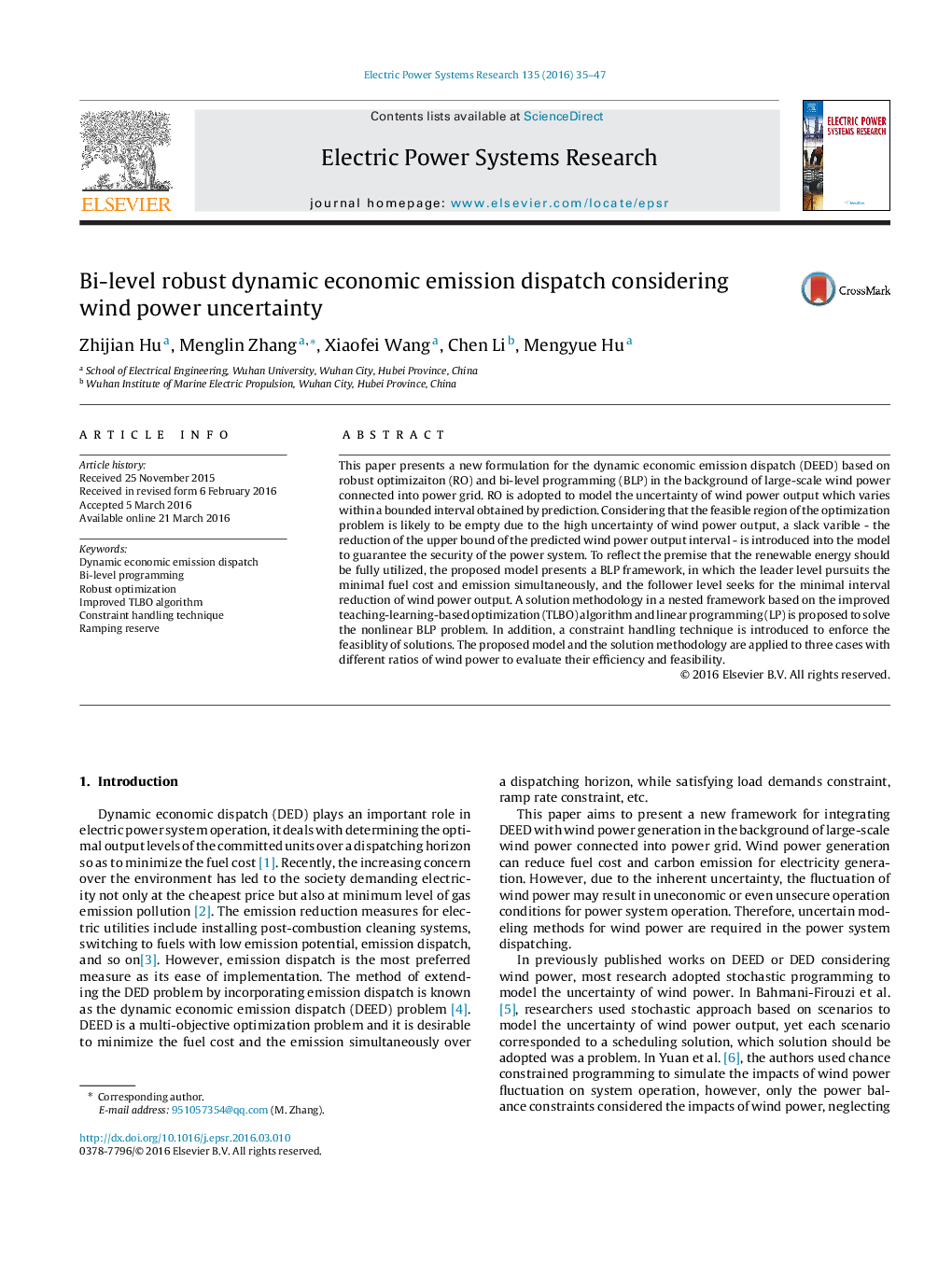| کد مقاله | کد نشریه | سال انتشار | مقاله انگلیسی | نسخه تمام متن |
|---|---|---|---|---|
| 704430 | 1460878 | 2016 | 13 صفحه PDF | دانلود رایگان |
• A bi-level dynamic economic emission dispatch model is proposed considering wind power integration.
• Robust optimization is adopted to model the uncertainty of wind power.
• A nested solution method is proposed for the solving of non-linear bi-level programming model.
This paper presents a new formulation for the dynamic economic emission dispatch (DEED) based on robust optimizaiton (RO) and bi-level programming (BLP) in the background of large-scale wind power connected into power grid. RO is adopted to model the uncertainty of wind power output which varies within a bounded interval obtained by prediction. Considering that the feasible region of the optimization problem is likely to be empty due to the high uncertainty of wind power output, a slack varible - the reduction of the upper bound of the predicted wind power output interval - is introduced into the model to guarantee the security of the power system. To reflect the premise that the renewable energy should be fully utilized, the proposed model presents a BLP framework, in which the leader level pursuits the minimal fuel cost and emission simultaneously, and the follower level seeks for the minimal interval reduction of wind power output. A solution methodology in a nested framework based on the improved teaching-learning-based optimization (TLBO) algorithm and linear programming (LP) is proposed to solve the nonlinear BLP problem. In addition, a constraint handling technique is introduced to enforce the feasiblity of solutions. The proposed model and the solution methodology are applied to three cases with different ratios of wind power to evaluate their efficiency and feasibility.
Journal: Electric Power Systems Research - Volume 135, June 2016, Pages 35–47
